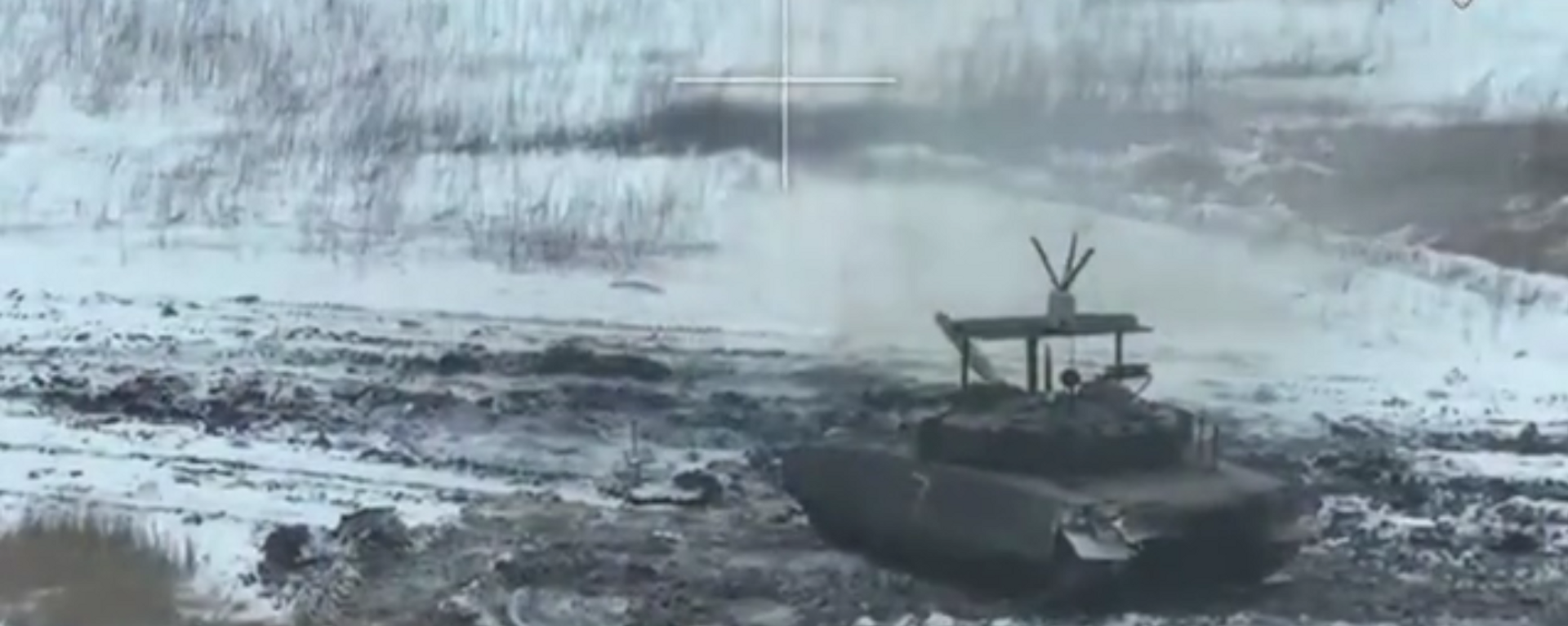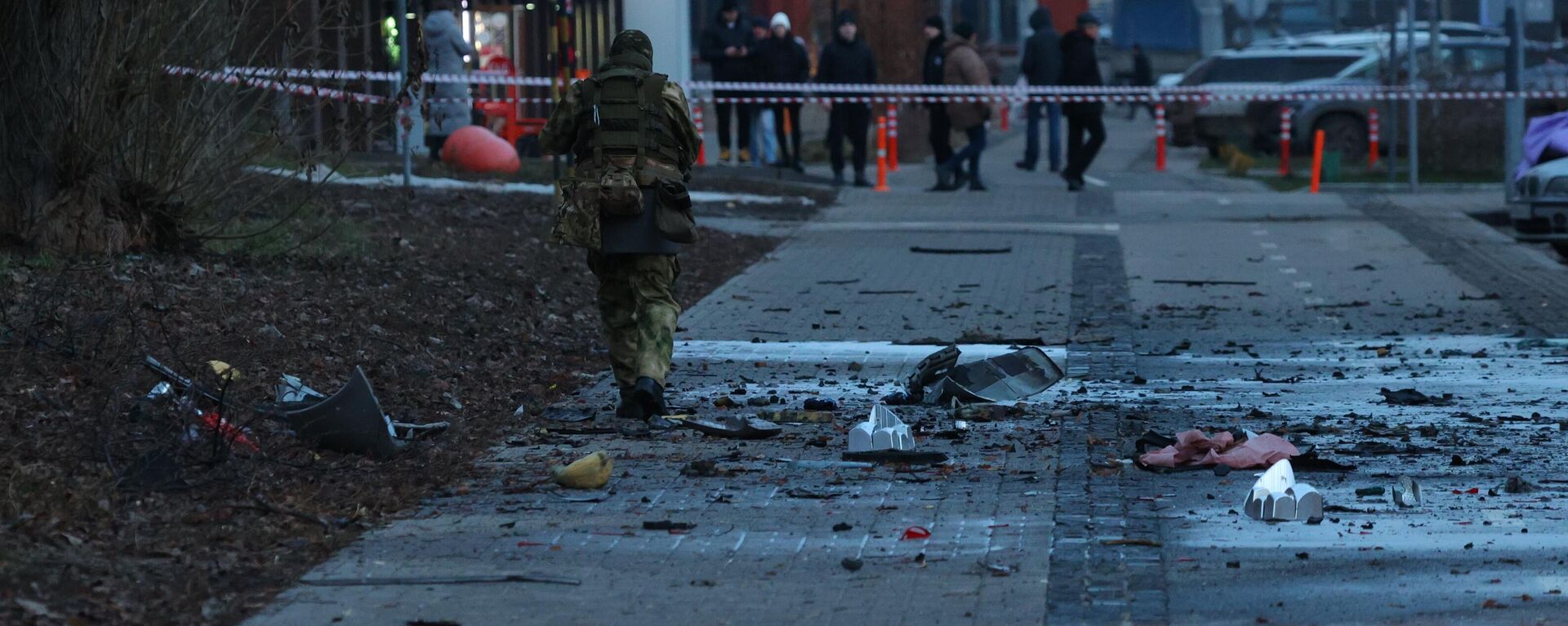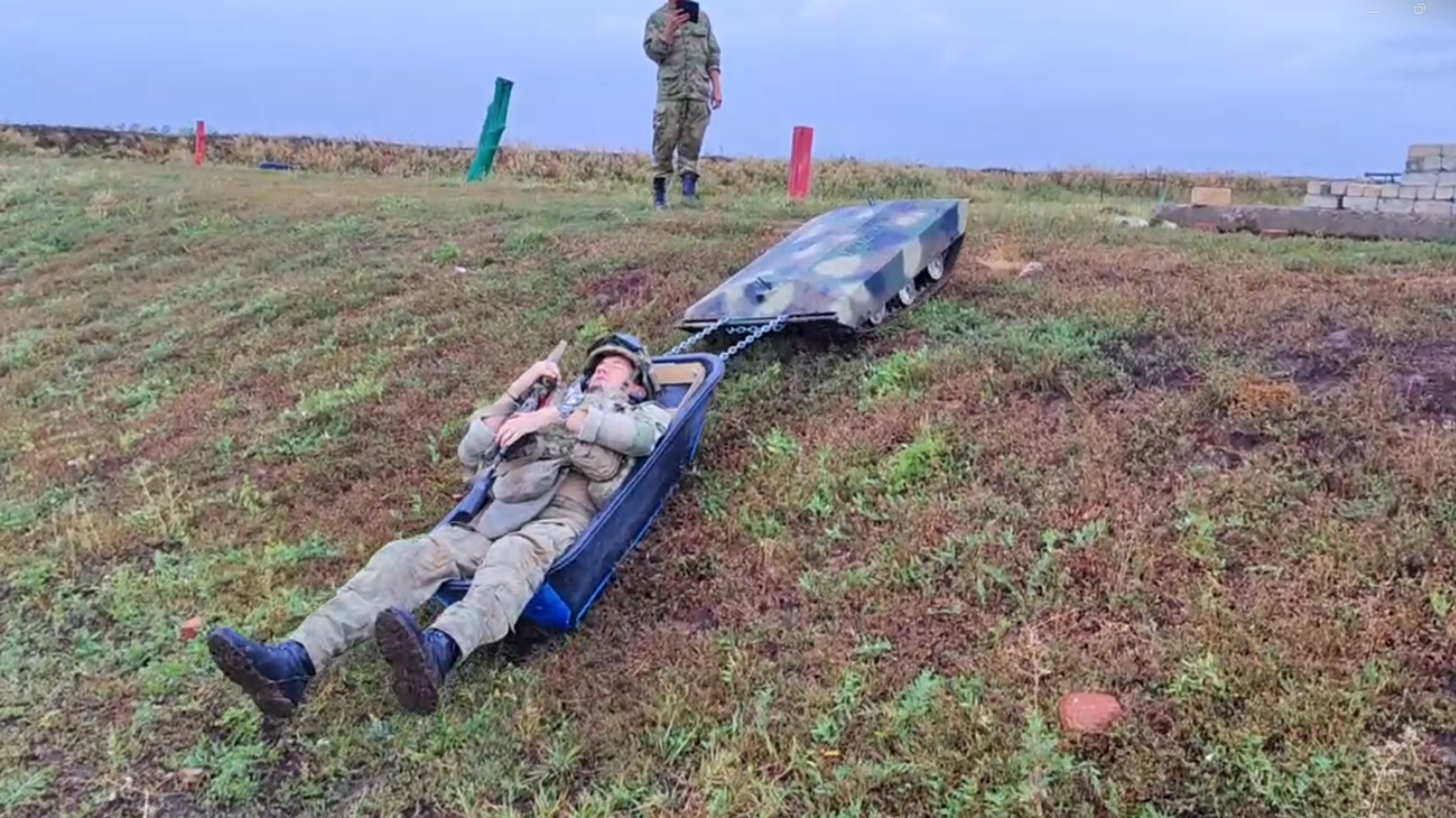https://sputnikglobe.com/20240117/russian-engineer-creates-robotic-ambulance-to-save-wounded-troops--video-1116236123.html
Russian Engineer Creates Robotic Ambulance to Save Wounded Troops – Video
Russian Engineer Creates Robotic Ambulance to Save Wounded Troops – Video
Sputnik International
Unmanned aerial, ground and sea-based drones have become a prominent feature of the ongoing Russia-NATO proxy war in Ukraine, turning dystopian science fiction visions of a future of man vs. machine combat one step closer to reality. But along with deadly implements of destruction, robots can also be used to save lives.
2024-01-17T19:18+0000
2024-01-17T19:18+0000
2024-01-18T09:12+0000
military
military & intelligence
russia
donbass
ukraine
robot
drone
https://cdn1.img.sputnikglobe.com/img/07e8/01/11/1116236341_0:8:1410:801_1920x0_80_0_0_28861563294cb8840f5dd387b0dbf1af.png
A veteran Donbass commander has given his impressions of the Bratishka (lit. ‘Little Brother’), a new robotic ambulance designed to evacuate wounded troops from the battlefield.The Bratishka is the brainchild of a Russian robotics enthusiast and engineer named Konstantin, who has been working on the robotic transporter with his 15-year-old son Vyacheslav, and was inspired to create the robot after friends participating in the special military operations told him about the difficulties they would face evacuating wounded from the line of fire during periods of enemy shelling.The unmanned vehicle is 1.2 meters long and weighs about 200 kilograms, is fitted with a camera and has a carrying capacity of up to 150 kilograms. It has a five hour endurance time, and can travel up to 10 kilometers per hour.Building the prototype took two months, and Konstantin spent some two million rubles (about US$22,550) of his own money on the project. The father and son tested the vehicle near their family home, which includes geography that’s similar to the steppe-heavy frontline regions.Konstantin hopes to eventually add a manipulator arm to the vehicle in the future to be able to use the Bratishka to save even unconscious fallen soldiers, and to equip it with an intercom that an army doctor can use to determine an injured trooper’s condition and provide first aid advice.In an interview with Russian media last fall, Konstantin said it would take a month to prepare the Bratishka for full-scale testing, after which it would take between three and six months to start mass production.
https://sputnikglobe.com/20240114/watch-new-russian-anti-drone-system-safeguard-tank-in-ukrainian-conflict-1116155951.html
https://sputnikglobe.com/20240117/four-rockets-of-rm-70-vampire-mlrs-two-drones-destroyed-over-belgorod-region---mod-1116214438.html
russia
donbass
ukraine
Sputnik International
feedback@sputniknews.com
+74956456601
MIA „Rossiya Segodnya“
2024
News
en_EN
Sputnik International
feedback@sputniknews.com
+74956456601
MIA „Rossiya Segodnya“
Sputnik International
feedback@sputniknews.com
+74956456601
MIA „Rossiya Segodnya“
what is the role of drones in ukraine war, what drone systems is russia developing to use in ukraine
what is the role of drones in ukraine war, what drone systems is russia developing to use in ukraine
Russian Engineer Creates Robotic Ambulance to Save Wounded Troops – Video
19:18 GMT 17.01.2024 (Updated: 09:12 GMT 18.01.2024) Unmanned aerial, ground and sea-based drones have become a prominent feature of the ongoing Russia-NATO proxy war in Ukraine, bringing dystopian science fiction visions of a future of man vs. machine combat one step closer to reality. But along with deadly implements of destruction, robots can also be used to save lives.
A veteran Donbass commander has given his impressions of the Bratishka (lit. ‘Little Brother’), a new robotic ambulance designed to evacuate wounded troops from the battlefield.
“Today, I took part in field testing of the Bratishka unmanned tracked vehicle, created by engineer enthusiasts from Kazan. This miniature tractor device can be used in real combat operations and various situations, such as mining/demining, storming enemy positions using an automatic rifle or ATGM installed onboard, etc. It can deliver weapons, conduct reconnaissance, engage in electronic warfare, fight against enemy drones, evacuate the wounded, deliver ammunition to frontline positions, etc., depending on troops’ needs and its onboard attachments,” Donbass militia volunteer commander Viktor Anosov said, speaking to Russian media about the design.
The Bratishka is the brainchild of a Russian robotics enthusiast and engineer named Konstantin, who has been working on the robotic transporter with his 15-year-old son Vyacheslav, and was inspired to create the robot after friends participating in the special military operations told him about the difficulties they would face evacuating wounded from the line of fire during periods of enemy shelling.
The unmanned vehicle is 1.2 meters long and weighs about 200 kilograms, is fitted with a camera and has a carrying capacity of up to 150 kilograms. It has a five hour endurance time, and can travel up to 10 kilometers per hour.
The Bratishka is operated by remote control using an encrypted frequency with a range up to 2.5 km, which could be increased to 10 km using a dronecopter and a signal repeater. For protection, the drone is fitted with armor thick enough to survive a machine gun bullet, and Konstantin has developed a smoke grenade firing system to make enemy targeting difficult.

14 January 2024, 12:45 GMT
Building the prototype took two months, and Konstantin spent some two million rubles (about US$22,550) of his own money on the project. The father and son tested the vehicle near their family home, which includes geography that’s similar to the steppe-heavy frontline regions.
Konstantin hopes to eventually add a manipulator arm to the vehicle in the future to be able to use the Bratishka to save even unconscious fallen soldiers, and to equip it with an intercom that an army doctor can use to determine an injured trooper’s condition and provide first aid advice.
In an
interview with Russian media last fall, Konstantin said it would take a month to prepare the Bratishka for full-scale testing, after which it would take between three and six months to start mass production.
Konstantin says his company can build between 20-30 Bratishkas per month, finances permitting, and has welcomed any opportunities for collaboration and financing, only asking that speculator investors not bother, since his is not a for-profit project.

17 January 2024, 04:39 GMT




